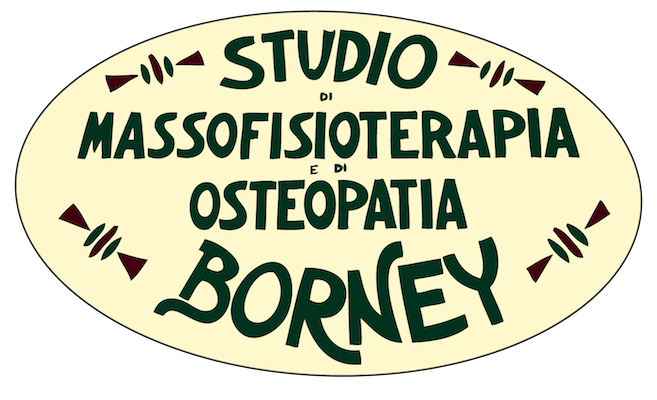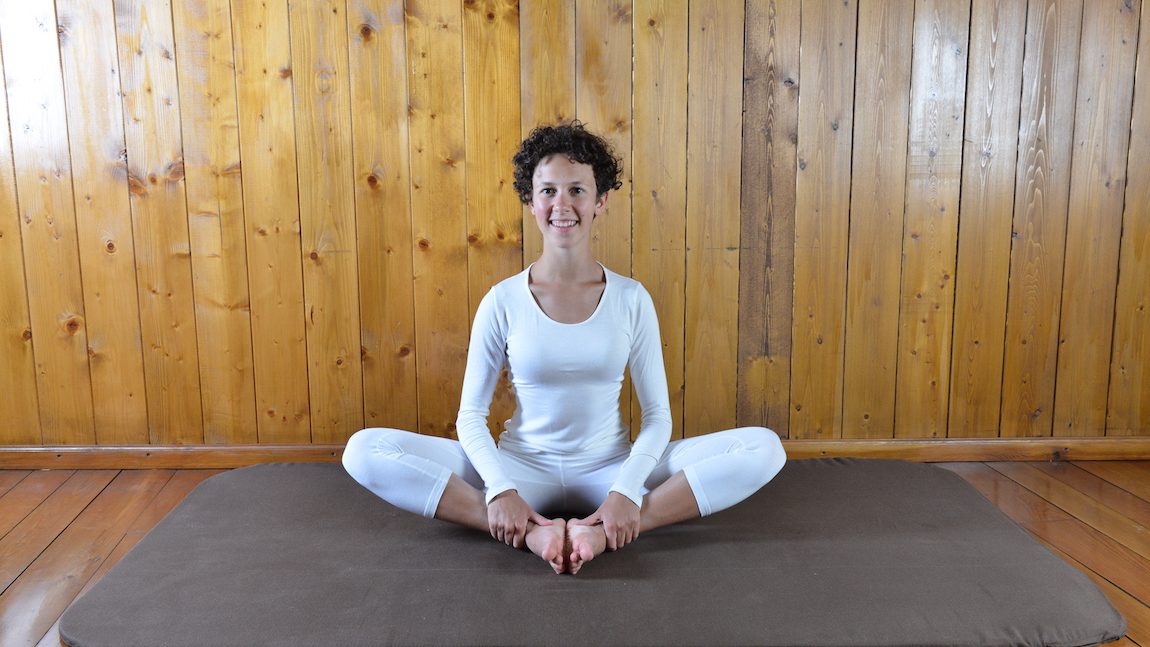Most people who come to our center suffer from back pain. We advise you to read this brochure carefully and to keep as much as possible to the indications, they are easy but precious allies for maintaining good health.
THE MAIN CAUSES OF BACK PAIN
A – Postura scorretta quando si è seduti, al lavoro, in casa o in automobile. Quando non teniamo la schiena nella corretta posizione il peso del corpo non raggiunge il bacino e va a gravare sulla zona lombare creando delle discopatie progressive. E’ molto importante utilizzare sedie che permettano alla schiena di mantenersi diritta, e, se possibile, è fortemente consigliato l’uso di sedie ergonomiche. Quando andate in auto l’ideale è impiegare un cuscinetto di 25 cm per 40 cm da inserire sullo schienale del guidatore nella zone lombare. Con questo cuscinetto lombare è però fondamentale tenere il più possibile i glutei aderenti al sedile, altrimenti esso risulta inutile. Ogni ora è poi consigliabile fare una pausa e camminare un poco prima di sedersi nuovamente al volante.
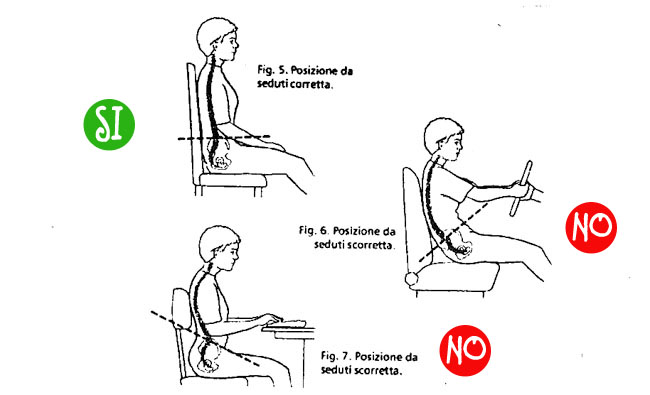
B – You shouldn’t lift loads while keeping the legs extended with your torso bent forward. Instead, when you need to lift a weight, bend your legs while keeping your back straight so as to load your legs and not your back.
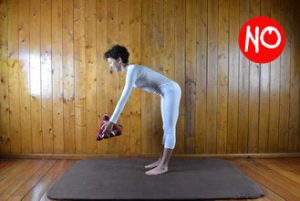
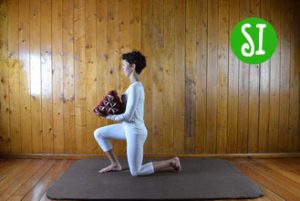
C – Lifting up a weight which is distant from your body is one of the main causes of back pain. Always keep loads close to your body.
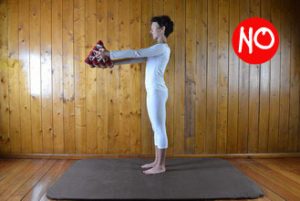
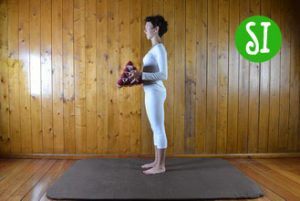
D – Inadequate mattress or bed. They do not have to buckle under the weight of a body. We recommend pocket spring mattresses and beds with wooden slats. The cervical pillow must be low. The correct position to sleep is lying on one side with a flexed leg. The prone and supine positions (prone = belly up, supine = belly down) are not recommended. When you get out of bed, you first have to turn completely on your side and then, with your legs flexed, you pull up using your arms.
EXERCISES
1 A. When sitting with one leg extended forward and the other bent with the foot towards the groin, extend forward stretching the hands towards the ankle of the extended foot. If you are very supple you can hold the foot. You can imagine unrolling your back as if you were to disconnect the vertebrae one by one.
1 B. Do the same exercise on the other side.
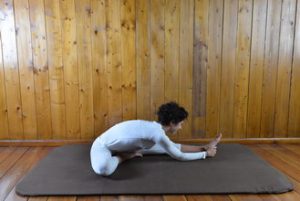
1 C. Stretch both legs forward and flex towards the ankles.
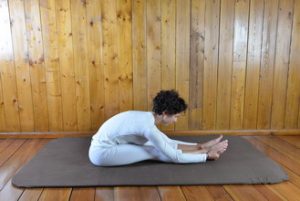
2 A. Sitting legs apart with hands towards the ankle or the foot. Stretch out in the direction of the foot.
2 B. Do the exercise towards the other ankle or the foot.
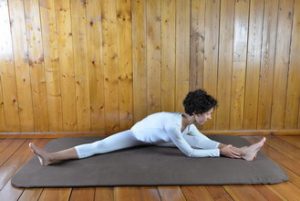
2 C. Sitting legs apart, the lumbar area is extended towards the center, unrolling the vertebrae of your back vertebra after vertebra.
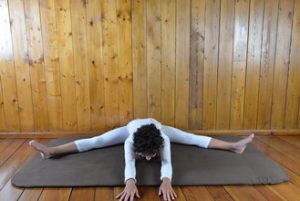
3 A. Sitting on the floor with your back straight, join the soles of your feet and bring your knees to the floor, helping with your hands or elbows.
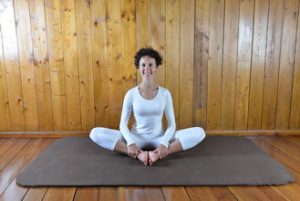
3 B. In the same position, lean forward and bring your head to the feet. Here, too, you can imagine unrolling the vertebrae of your back one by one, both in the descending and ascending phase.
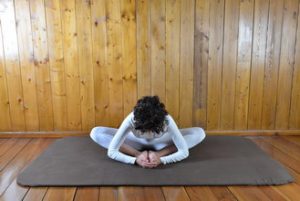
4. Now perform a spinal twist that should provide you with a pleasant tension in the lower back and sides. While sitting, bring the right foot over the left knee. Flex your left arm and bring it sideways on the right thigh just above the knee. During the tension, the elbow will exert a constant pressure inward to stabilize the leg. Hold the right leg behind you and slowly rotate the head looking over the right shoulder. Take 10 slow breaths and then repeat the exercise on the other side.
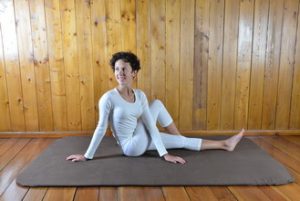
5. Lie on your back on the ground and cross the foot on the opposite knee and slowly pull the knee sideways to the ground with your hand. Do the exercise on both sides.
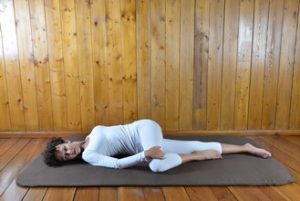
6 A. Lie on your back on the ground and take your knee with your hands and flex it towards the chest.
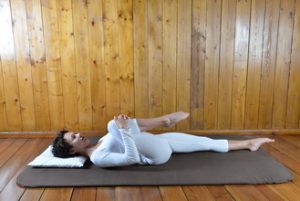
6 B. Bring your leg back by placing your foot on the floor before stretching it. Do the exercise with the other leg.
6 C. Raise both legs and bring them towards your chest. From this position, if you do not have cervical pains, bring your head to your knees.
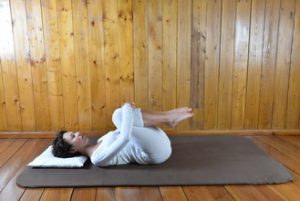
6 D. Piriform: Lie on your back. Place one foot on the opposite knee and grip the flexed knee with both hands. Hold the position for ten breaths.
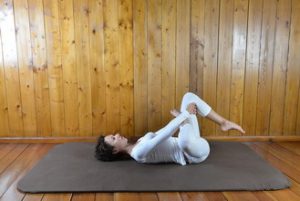
6 E. Piriform: From position 6, stretch the leg and hold the position for ten breaths.
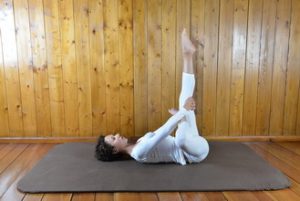
WALL RELAXATION POSITION
Hold the position 1-2 minutes then always return to the initial position
This exercise is useful if you suffer from back or shoulder pain. We advise you to do it 10 ‘- 15’ in the evening because in the morning when we get up we are too stiff. Do not insist on the positions if you feel back pain.
1. Lie down on your back with your buttocks sticking to the wall and your legs bent towards your chest.
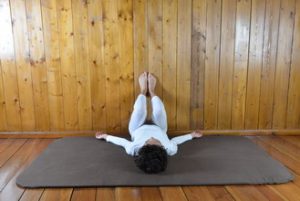
2. Stretch one leg on the wall and after one or two minutes fold it towards the chest. Do the exercise with the other leg.
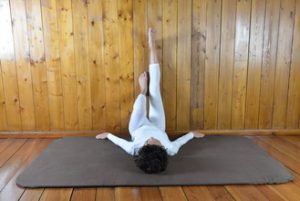
3. If you do not feel back pain, stretch the legs along the wall with hammer feet for a few minutes. Then, return to the initial position.
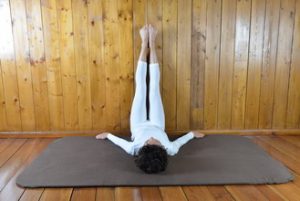
4. Stretch your legs on the wall.
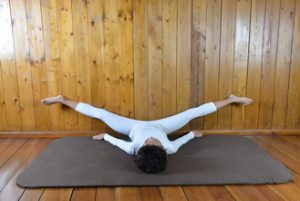
5. You can perform an extended rotation with your arms outstretched with palms facing up until behind the head. If your shoulders are painful, raise your arms and place them on a cushion put behind your head. Hands must always rest on the floor or on the cushions.
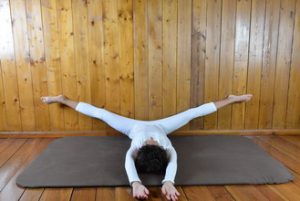
6. Stretch one leg on the wall and place the foot of the other limb on the extended knee. Grab the extended knee with both hands and hold the position for ten breaths.
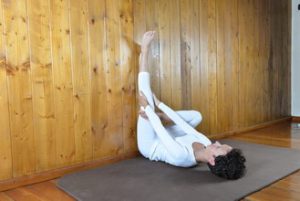
 Italian
Italian English
English French
French